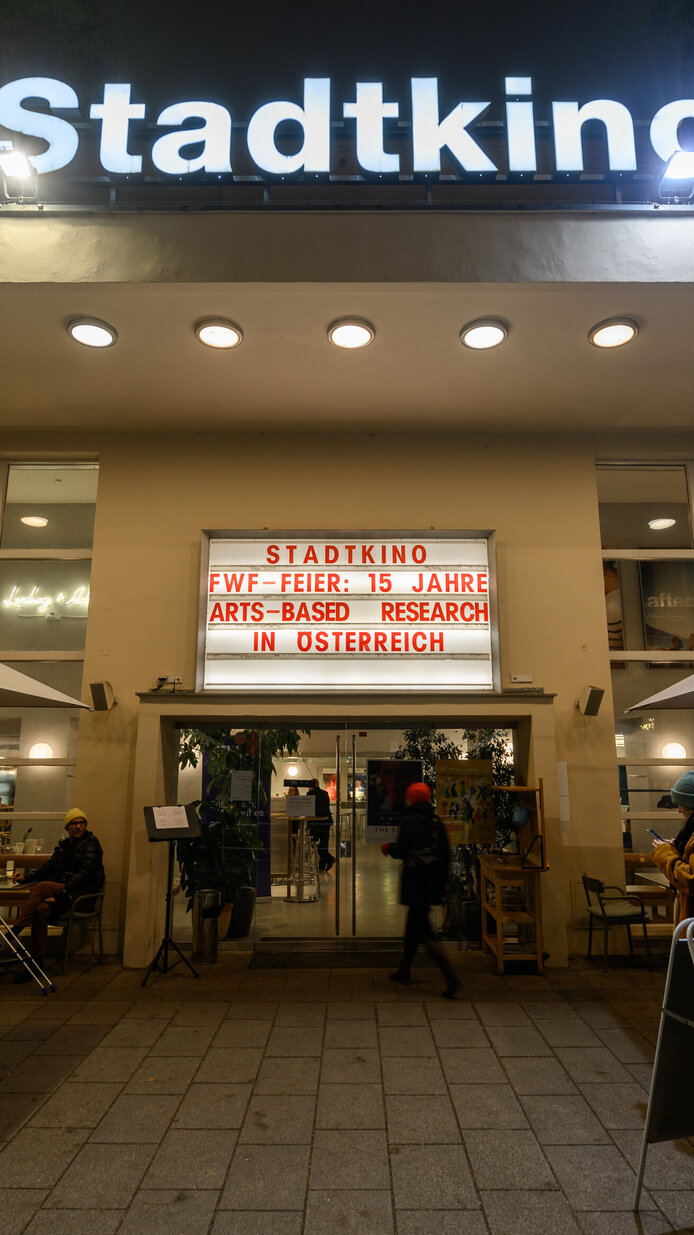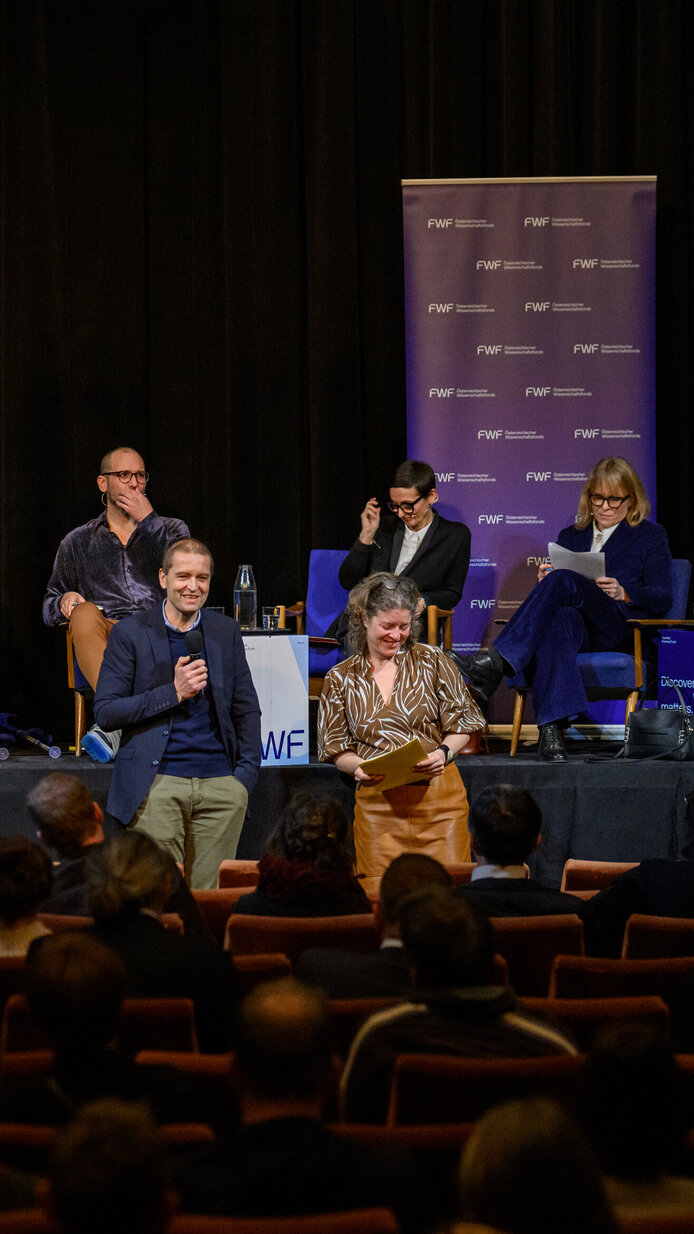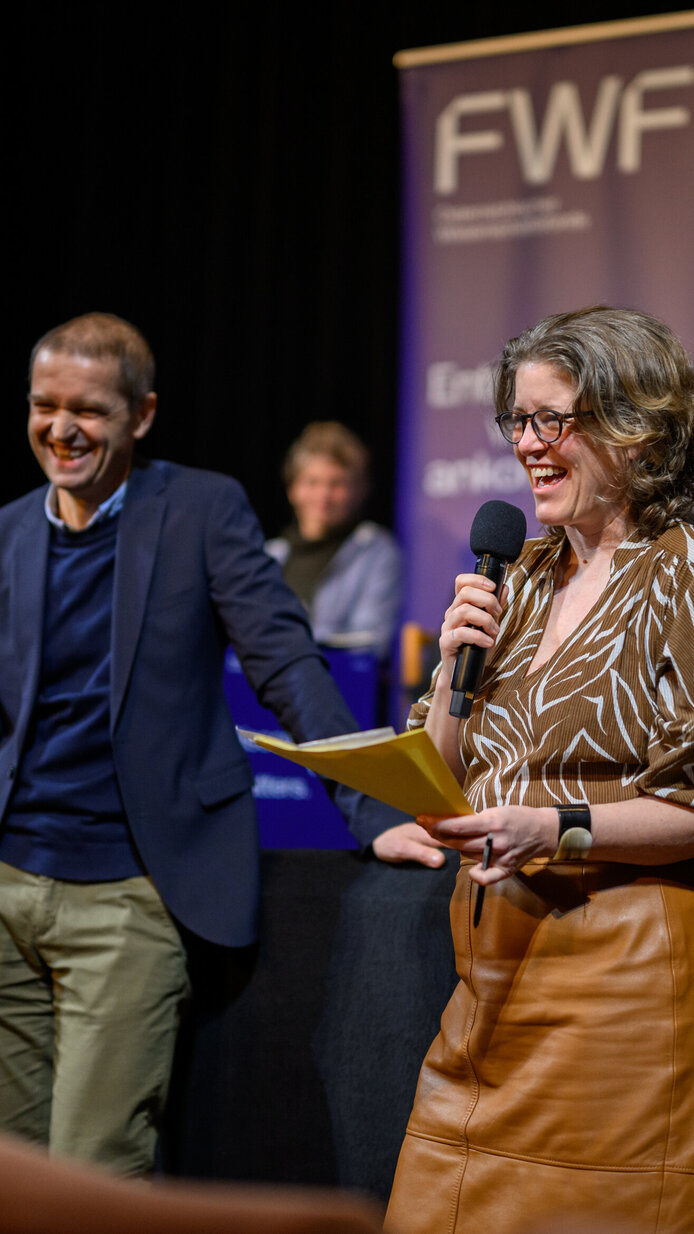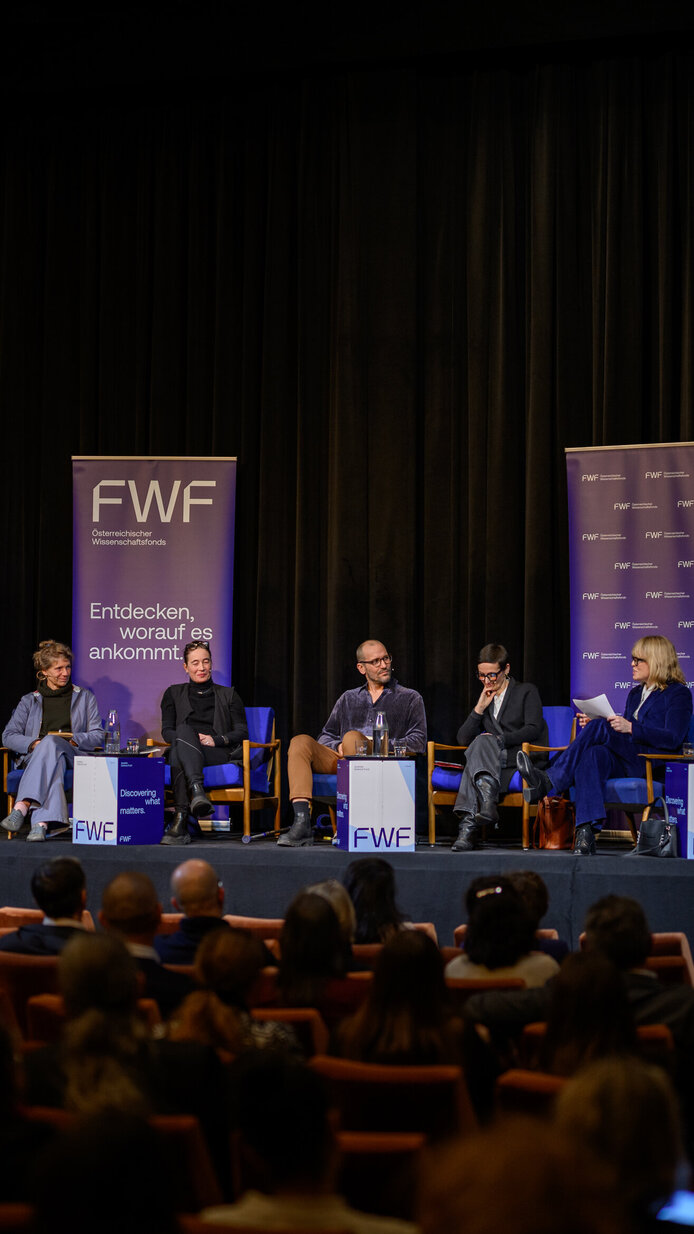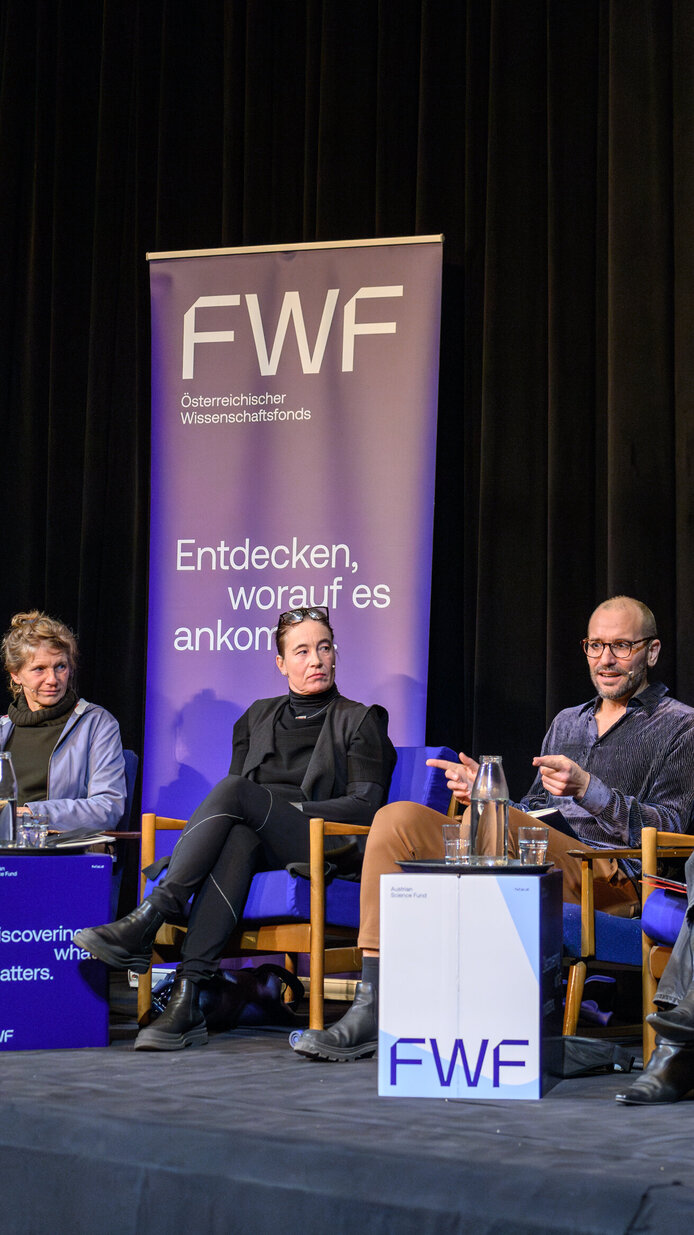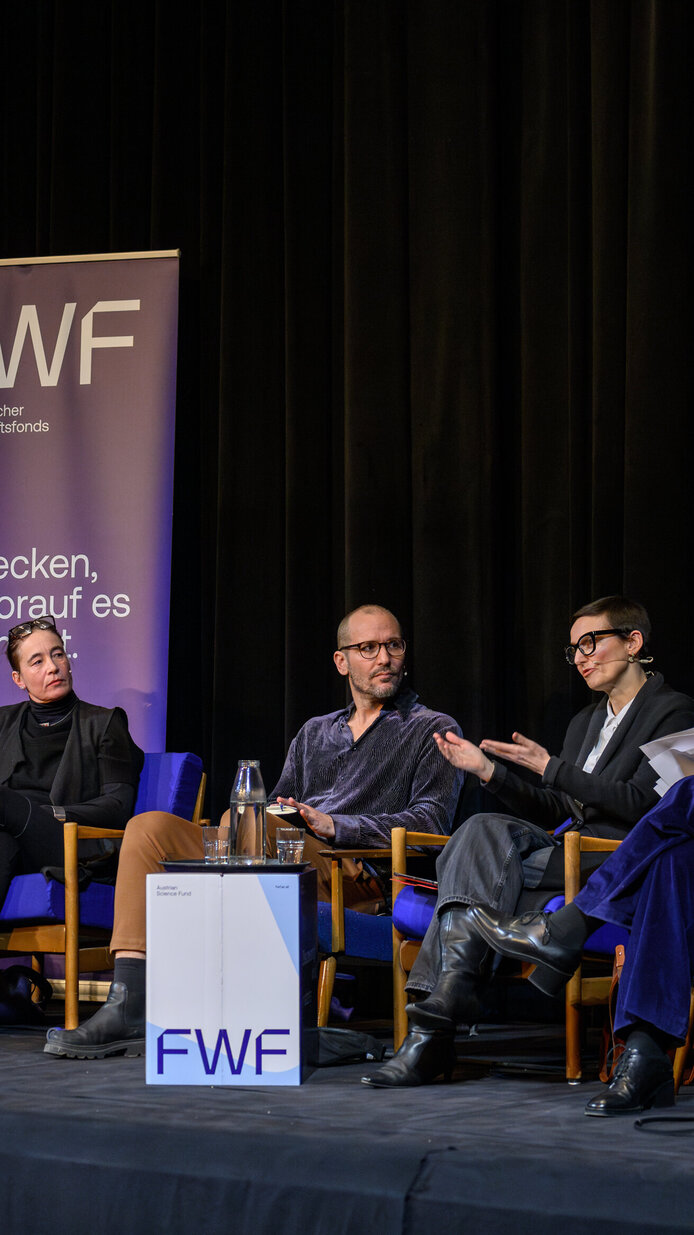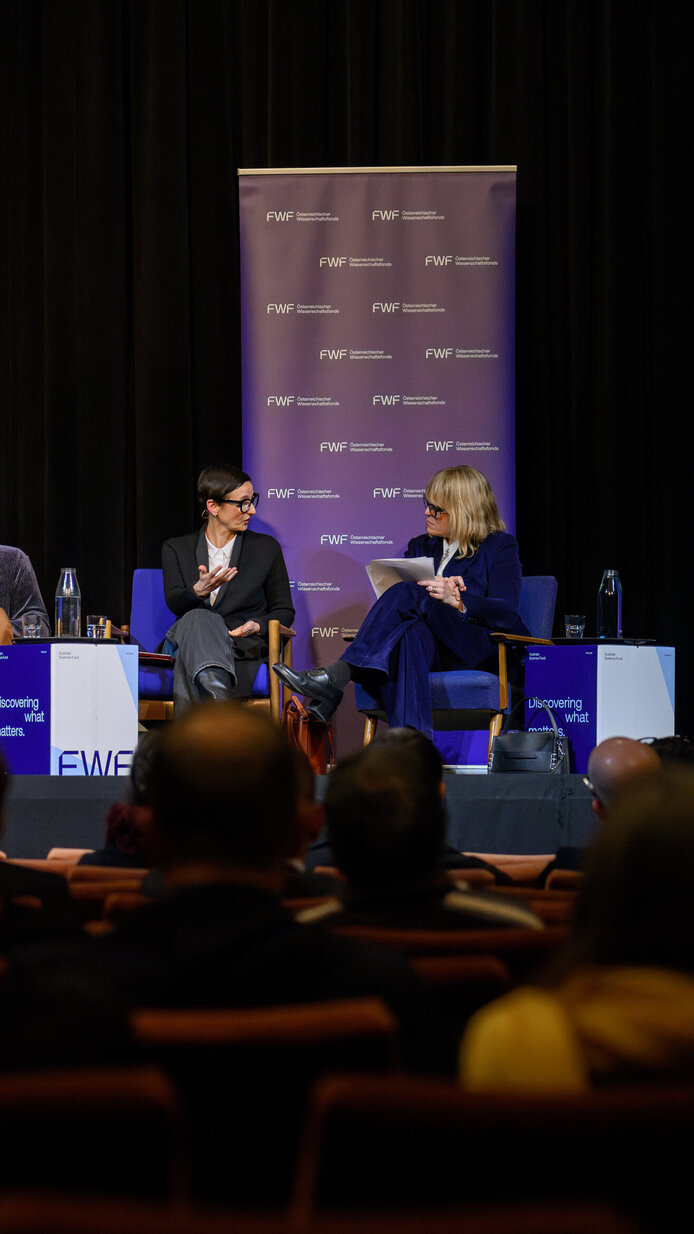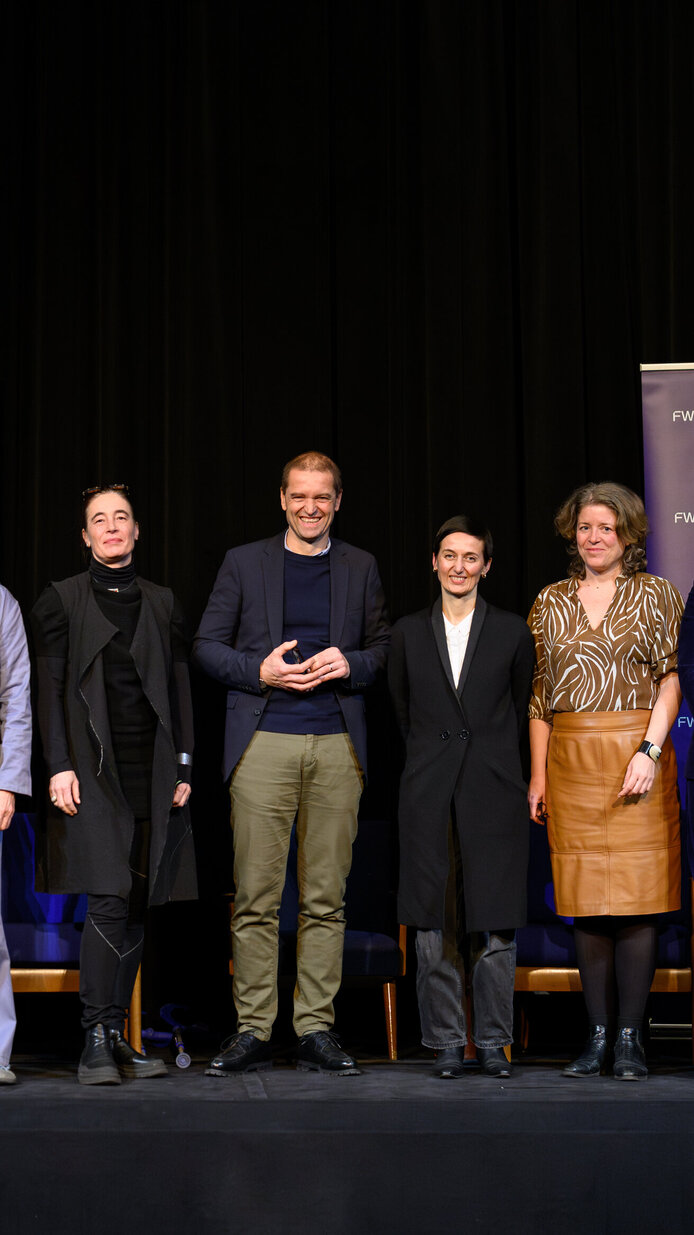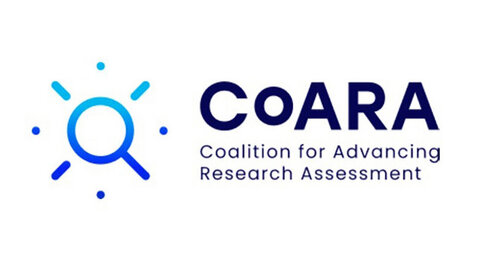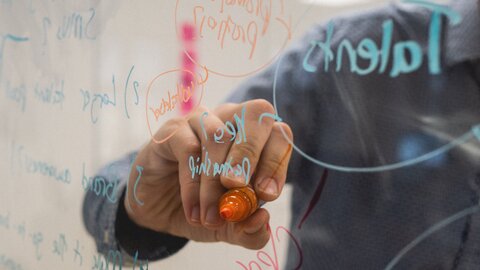Arts-Based Research: Forging New Paths to Knowledge
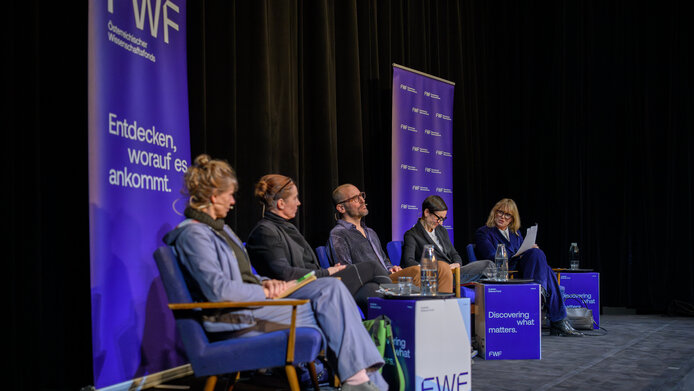
An organic shoe grown from bacteria, exposing society’s concealed taboos, or exploring the body language of surgery – three examples of projects that combine both arts-based and scientific research. With its Arts-Based Research (PEEK) program, which is the only one of its kind in Europe, the FWF has been funding arts-based research for 15 years, facilitating innovative approaches to this unique type of research.
Eva Kernbauer, FWF Vice-President for the Humanities and Social Sciences, together with FWF President Christof Gattringer, welcomed around 120 guests to the Stadtkino Wien. She began by emphasizing the importance of the Arts-Based Research program, saying, “The Arts-Based Research program has contributed significantly to the development of this type of research in Austria and is a unique selling point for us as a research location, increasing our visibility far beyond the country’s borders. With this funding program, the FWF is helping to increase the national and international significance of arts-based research. We are delighted with the wide variety of topics covered and the highly interdisciplinary and collaborative nature of the almost 130 funded projects.”
Moderated by Ö1 radio journalist Marlene Nowotny, the arts-based researchers Ruth Anderwald and Barbara Imhof then joined Anke Haarmann from Leiden University and Marcel Bleuler from the Zurich University of the Arts for a discussion.
Common goals and challenges of arts-based research
The panelists agreed that arts-based research is a young, interdisciplinary field with great potential to shift the boundaries between art and science. Barbara Imhof emphasized that the experimental and iterative methods applied in arts-based research are an ideal complement to the strictly regulated scientific approach. Marcel Bleuler pointed out that arts-based research opens up new perspectives by speaking to different target groups and addressing diverse needs. Anke Haarmann talked about the importance of further developing the concepts and methods of this discipline. She drew parallels with the historical development of the natural sciences and pointed out that, due to its inherent openness to new ways of thinking, arts-based research can be particularly fruitful. “The idea is to initiate research that uses artistic work to answer questions and search for specific forms of answers without focusing on solutions,” says Anke Haarmann.
Controversy: Art as research?
One key debate revolved around the definition of arts-based research and differentiating it from other areas. “What would research be if it excluded any creative or art-based contexts or approaches?” asked Ruth Anderwald. For her, the term “arts-based research” is a tautology, as creativity is an integral part of research. In this context, the difference lies not in the method, but in the degree of reflexivity: Arts-based research demands that every step in the process be subject to critical scrutiny.
Marcel Bleuler questioned the institutionalized approaches that some artists from older generations might perceive as restrictive. He argued for a balance between institutional support and maintaining an experimental character.
FWF funding program Arts-Based Research a pioneer in Europe
The FWF’s Arts-Based Research program, also known as PEEK, an acronym of the German title “Programm zur Entwicklung und Erschließung der Künste” (program for the development and exploration of the arts), was praised by all panel participants as groundbreaking. Marcel Bleuler emphasized that the program makes Austria a pioneer in the funding of arts-based research compared to other countries. Barbara Imhof spoke of the international recognition of the program and suggested establishing it as a model for Europe-wide funding. In this context, Anke Haarmann would like to see a move away from the epistemological legitimization debates that are still prevalent in some countries. She criticized the German structures in particular and noted that it took 200 years for the natural sciences to achieve the recognition they enjoy today.
Arts-based research as a driver of innovation
The social relevance of arts-based research was emphasized several times. Ruth Anderwald referred, for example, to her work on the concept of dizziness, which can be a resource in interdisciplinary projects, for example in creativity research or in various exhibitions. Barbara Imhof reported on her projects, which transfer biological principles like growth or material formation to architecture, opening up new design strategies in a variety of applications. “This often involves working together with people from the natural sciences, humanities, or even engineering, and trying out their methods, which opens up new perspectives and new results,” she said. Anke Haarmann sees artistic research as a key to finding alternative approaches to crises and challenges, but warned against focusing too much on problem-solving. She also emphasized the power of art to create new levels of understanding. Marcel Bleuler added, “There are different ways to make knowledge tangible. I believe that artists have the potential to open up new perspectives for researchers and society.”
A look into the future of arts-based research
At the end of the discussion, the participants talked about their hopes for the next 15 years of arts-based research. Ruth Anderwald spoke out in favor of more diversity and other alternative funding approaches. Marcel Bleuler argued in favor of increased flexibility to avoid limiting the field through excessive institutionalization. Barbara Imhof would like to see stronger European networking, while Anke Haarmann pointed out the need for additional financial resources and fewer debates on legitimacy.
The participants agreed that arts-based research makes a significant contribution to a transdisciplinary, cooperative research landscape. Its strength lies in its ability to create new perspectives that go far beyond traditional disciplines’ established boundaries.
